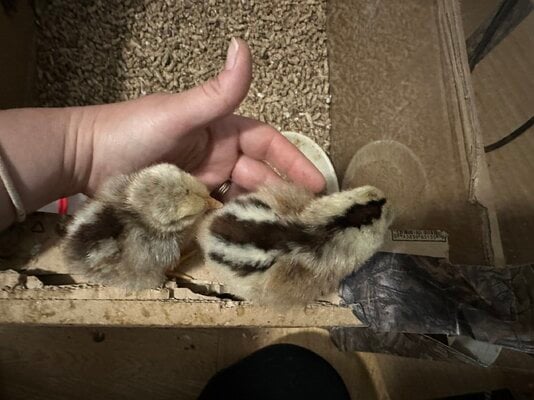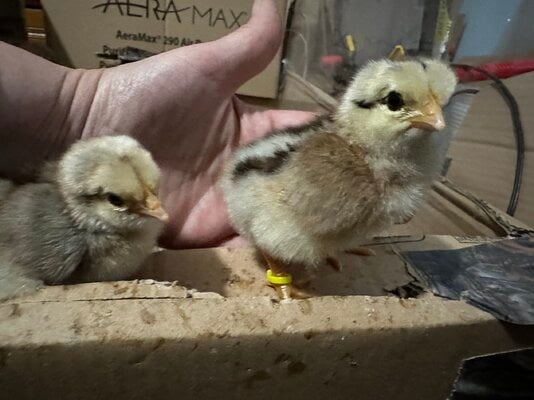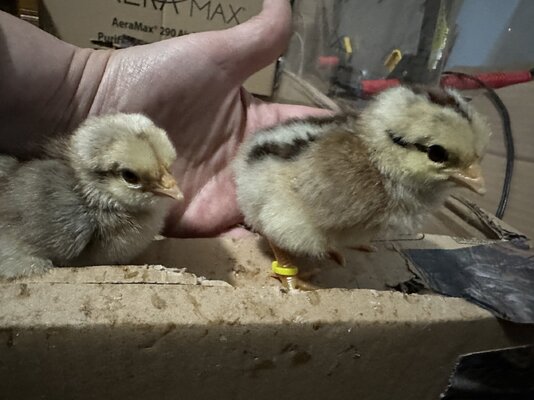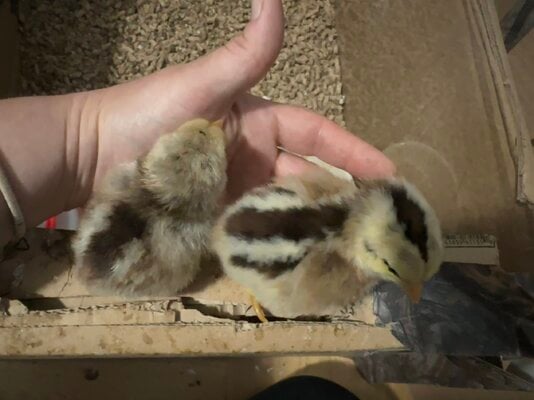I have 2 Bielefelder mix chicks. Mom is Biele. Dad is a black mix of mostly orpington. I believe this means the chicks’ colors are sex linked since Bieles have barring?
Am I correct in my thinking and can anyone tell me what traits I should be looking for to tell the difference? I have 2 this hatch but also have more on the way in the next couple weeks. These 2 look very different, so I’m thinking one female and one male, but which is which?
If the coloring is anything like Welsummer, I think the chick on the right with the prominent markings is female? And the more muddled colored chick on the left is male?
Am I correct in my thinking and can anyone tell me what traits I should be looking for to tell the difference? I have 2 this hatch but also have more on the way in the next couple weeks. These 2 look very different, so I’m thinking one female and one male, but which is which?
If the coloring is anything like Welsummer, I think the chick on the right with the prominent markings is female? And the more muddled colored chick on the left is male?
Attachments
Last edited:







